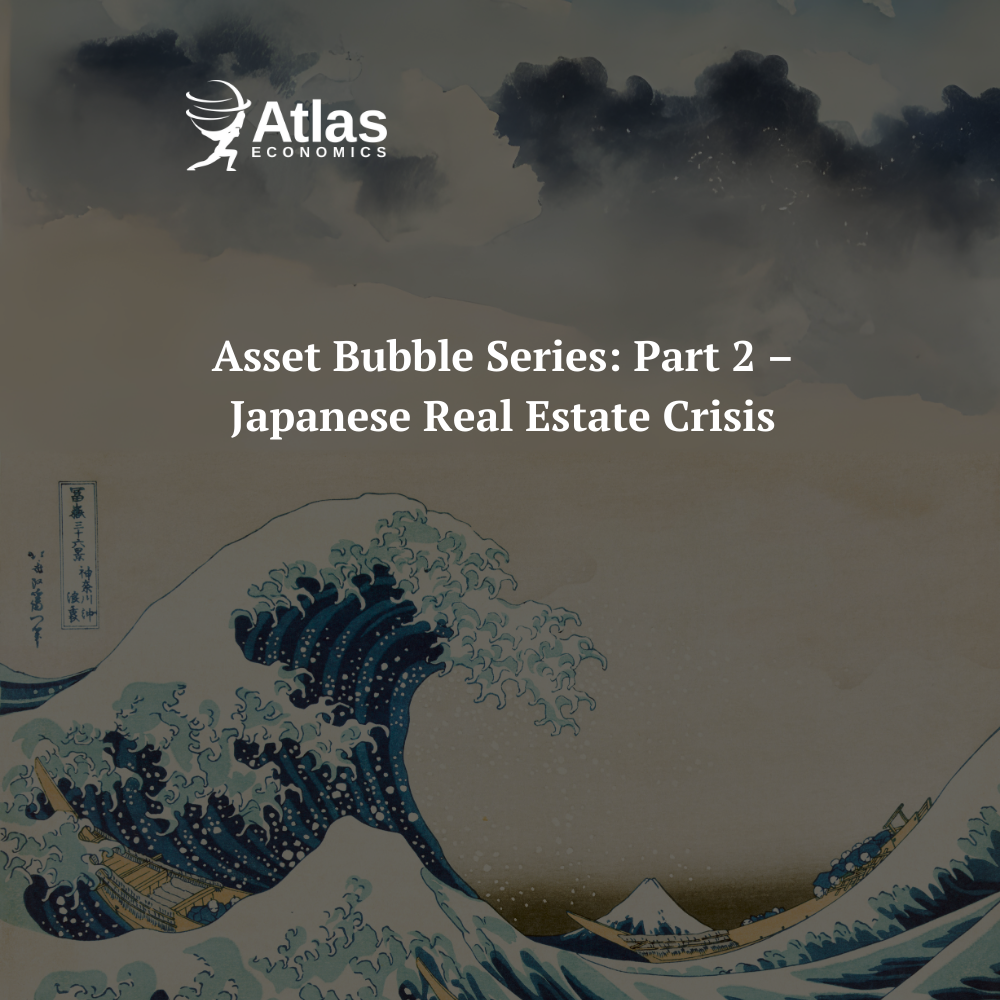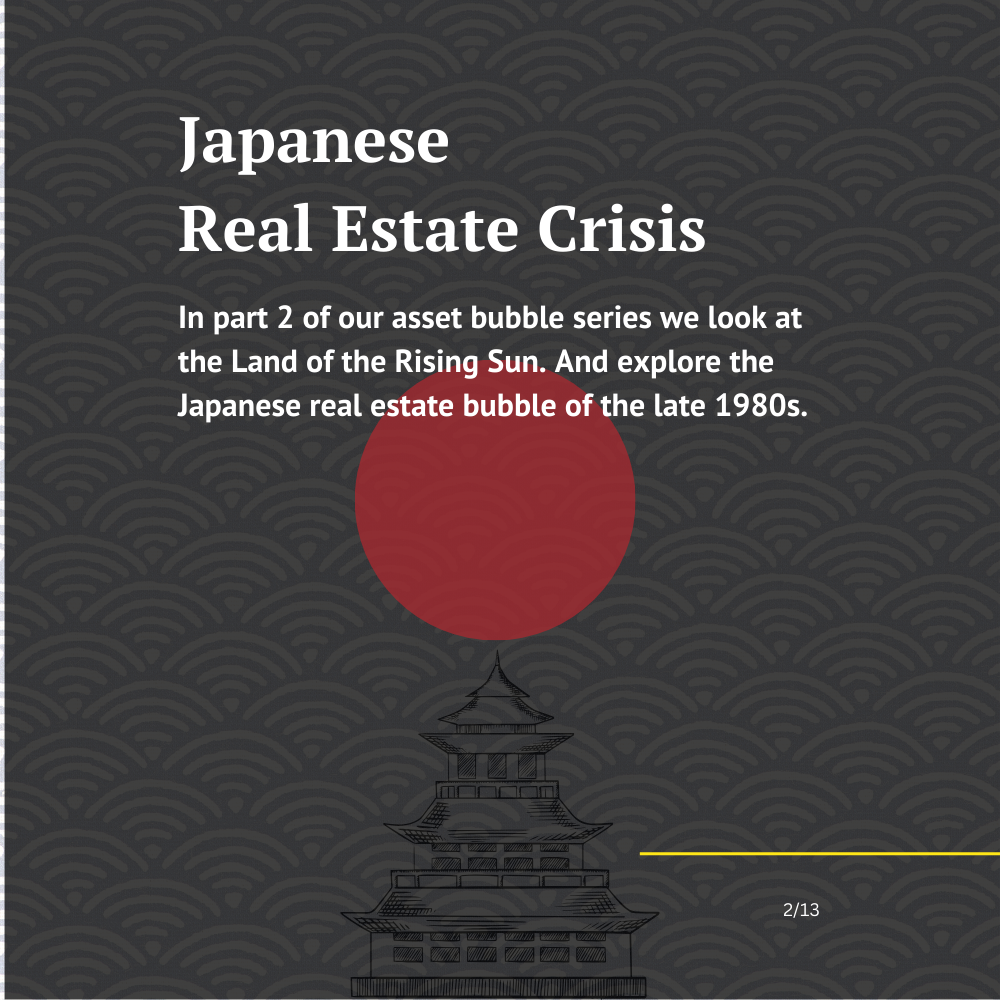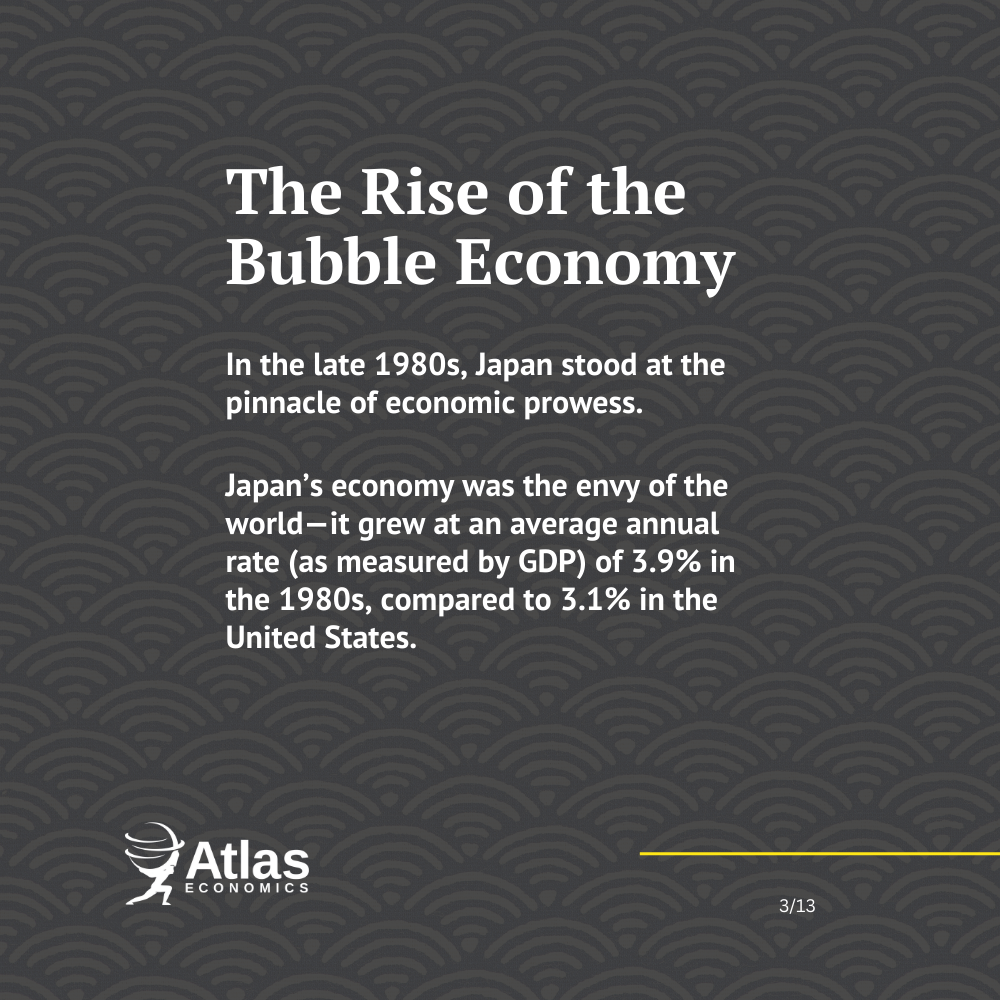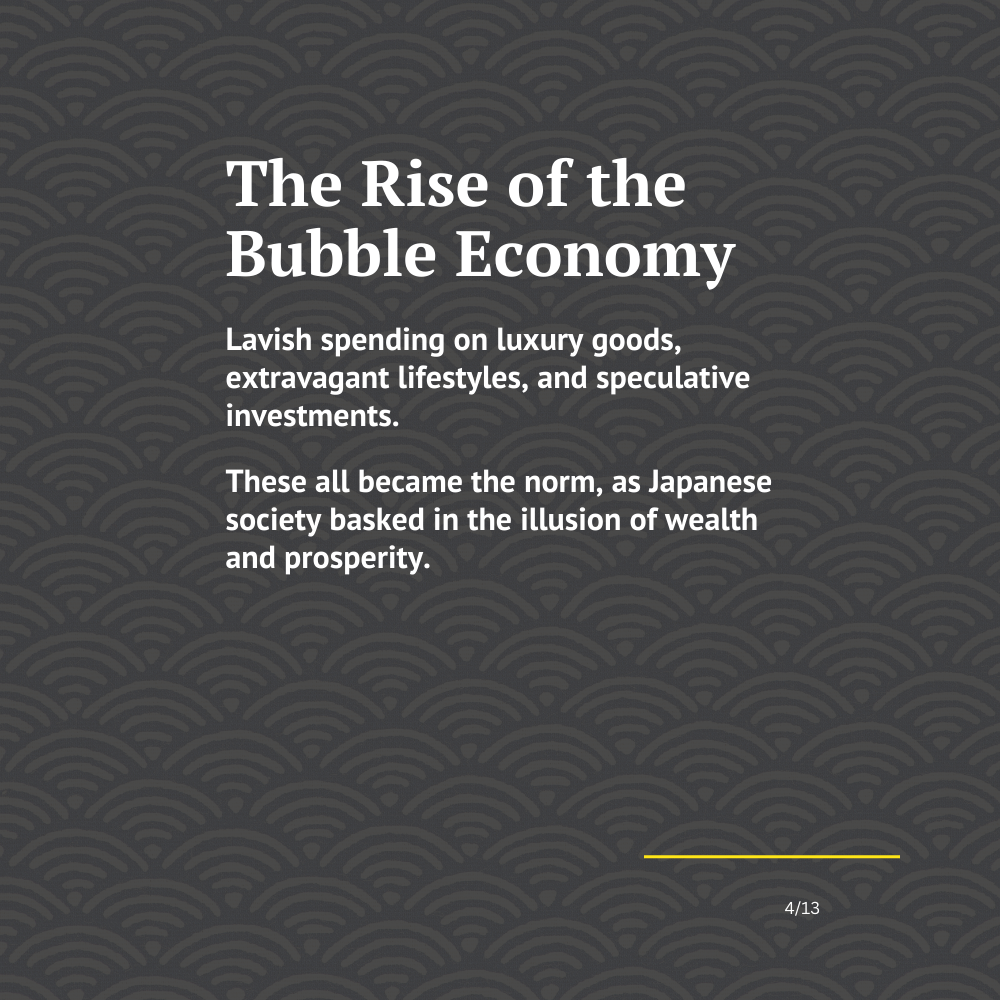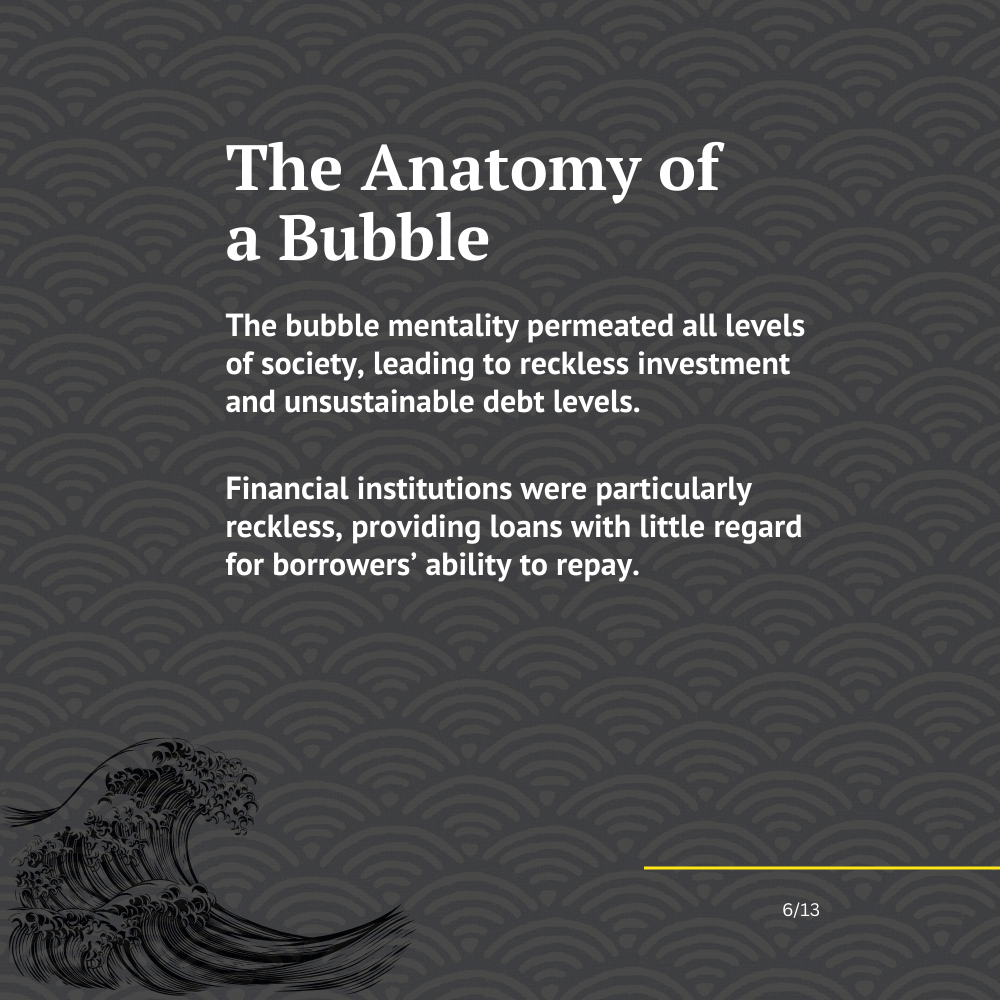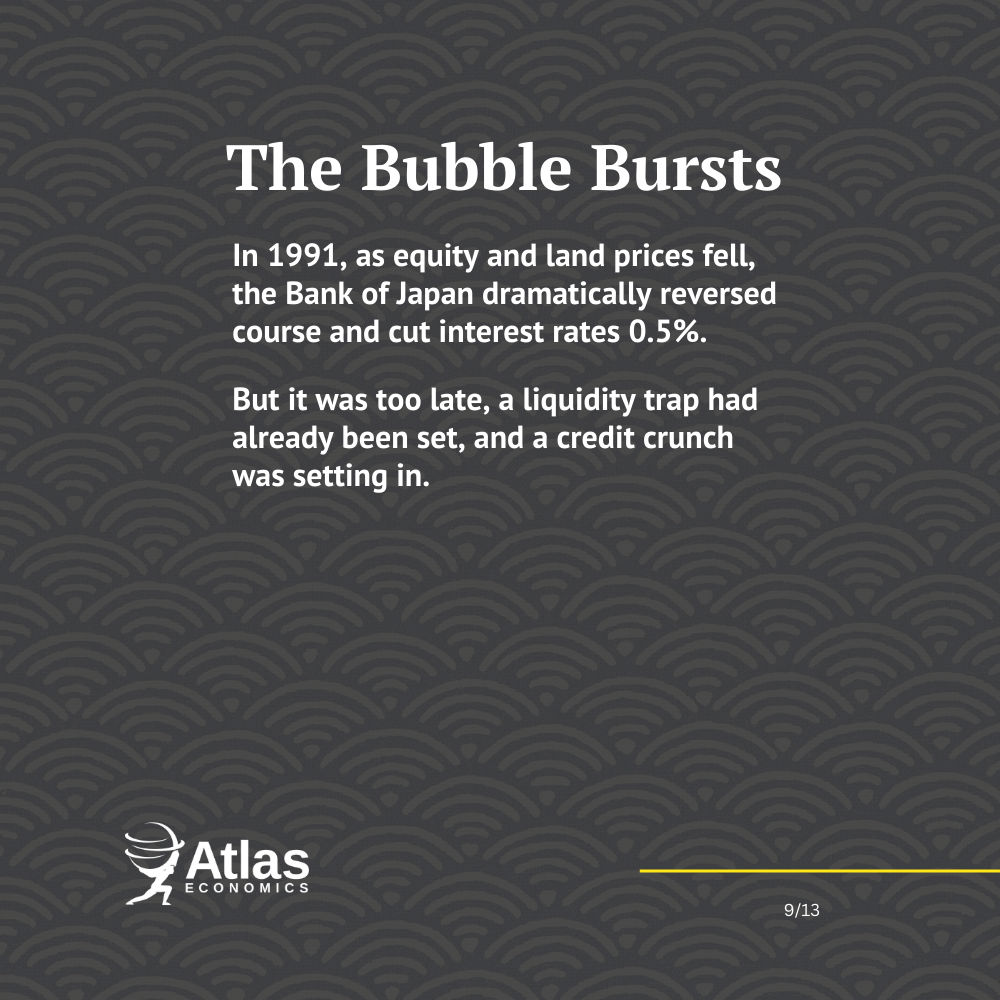Asset Bubble Series: Part 2 – Japanese Real Estate Crisis
Japan has made headlines this week, with unexpected news from the Japanese Government. After a second quarter of negative economic growth, the world’s third largest economy (no longer) has fallen into recession.
It’s fitting then that Part 2 of our asset bubble series transports us to the Land of the Rising Sun. We explore the Japanese real estate bubble of the late 1980s. We’ll be exploring its origins, dynamics, and consequences. Whilst offering insights into its enduring relevance in today’s economic landscape.
The Rise of the Bubble Economy
In the late 1980s, Japan stood at the pinnacle of economic prowess. Japan’s economy was the envy of the world. It grew at an average annual rate (as measured by GDP) of 3.9% in the 1980s, compared to 3.1% in the United States.
In the five years to 1989, the Japan’s largest listed companies (the Nikkei 225) had continued to grow from strength to strength. They were amongst the most technologically advanced and profitable in the world. The yen had appreciated sharply, whilst the Bank of Japan had been easing monetary policy.
The bubble economy permeated all aspects of Japanese society. Fueling a consumer spending spree and creating a culture of excess. Lavish spending on luxury goods, extravagant lifestyles, and speculative investments. These all became the norm as Japanese society basked in the illusion of wealth and prosperity.
The Anatomy of a Bubble
The Japanese real estate market was at the forefront of the growing bubble economy. Land scarcity and investment speculation soar commercial, industrial and residential land values. Particularly in Tokyo and Osaka. Values rose spectacularly as investors poured billions of yen into real estate. The bubble mentality permeated all levels of society. Leading to reckless investment and unsustainable debt levels. Financial institutions were particularly reckless. They provided loans with little regard for borrowers’ ability to repay.
The Bubble Bursts
In the early 1990s, the inevitable reckoning arrived. In late 1989, the Bank of Japan began raising interest rates. Concerned by the rapidly overheating economy. At the same time, real estate prices had already begun to peak with speculation beginning to wane.
Introduction of a consumption tax in 1989 also began to turn market sentiment. The Bank of Japan continued to sharply increase interest rates in 1990. By now, the economy was truly contracting. With the share market and real estate plummeting. Higher interest rates contributed to the end of rising land prices. But they also pushed the overall economy into a downward spiral.
In 1991, as equity and land prices fell, the Bank of Japan dramatically reversed course and cut interest rates 0.5. But it was too late, a liquidity trap had already been set, and a credit crunch was setting in.
In the early 1990s, the Japanese real estate bubble burst with catastrophic consequences. The trigger for the collapse was a combination of factors. It included tightening of monetary policy, overvaluation of assets, and a slowdown in economic growth. The once-booming real estate market came crashing down. Land prices plummeted and speculative investments soured. Plunging Japan into a prolonged period of economic stagnation. This became known as the “Lost Decade.
The aftermath of the real estate crash was felt across the Japanese economy. Banks saddled with bad loans, and businesses were facing bankruptcy. And households were grappling with negative equity. This sent Japan into a prolonged period of economic stagnation known as the “Lost Decade.”
Lessons for Today
The Japanese Real Estate Bubble offers valuable lessons for today’s markets. Particularly in an era of heightened financialisaton and speculative excess.
Beware the perils of asset price inflation: The Japanese experience underscores the dangers of unsustainable price increases driven by speculation rather than underlying fundamentals.
Challenge conventional wisdom: The belief in perpetual growth and the infallibility of markets proved to be a costly delusion. Questioning prevailing narratives and recognising the limitations of forecasting can help prevent future bubbles.
Strengthen regulatory oversight: The failure of regulators to rein in risky lending practices and curb speculative excess contributed to the severity of the bubble’s collapse. Robust regulatory frameworks are essential for maintaining market stability and preventing systemic crises.
Conclusion
The Japanese Real Estate Bubble serves as a stark reminder. These include the dangers of unchecked speculation and the perils of irrational exuberance. Part 2 of our asset bubble series has illuminated the rise, fall, and lessons of this historic event. Offering valuable insights for today’s investors, policymakers, and market participants.
Join us in the next instalment as we continue our exploration of history’s most infamous asset bubbles. Unravelling their complexities and uncovering the wisdom they hold for navigating today’s turbulent markets.
This article is part of our Asset Bubble Series.
If you enjoyed reading this, you might like to also read our Asset Bubble Series: Part 1 – Tulip Mania
